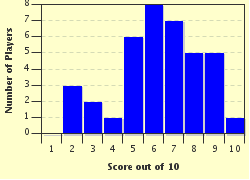Quiz Answer Key and Fun Facts
1. In which part of the African continent can you find the nation of Ethiopia?
2. Land-locked Ethiopia has borders with six other countries, but one of these lines ended up being the subject of a dispute that led to two years of war from 1998 to 2000. Against which of its neighbours did Ethiopia fight this conflict?
3. The Simien Mountains National Park was established in 1969 and is notable for containing which of Ethiopia's geographical features?
4. Lake Tana in the north-west of Ethiopia is the source of which major African river?
5. Which of the following is an Ethiopian national park particularly known for the large number of animals that are endemic to the area?
6. The first part of Ethiopia that many tourists will have seen is the airport. Which international airport was named after the borough or 'subcity' of Addis Ababa in which it is located?
7. Which of these products plays a key role in the economy of Ethiopia, making up a large proportion of its exports?
8. It is not a good idea to go swimming in Lake Shala, the deepest of the Ethiopian Rift Valley Lakes, because its waters are acidic.
9. Which of these options is a walled city located in eastern Ethiopia that has been a World Heritage Site since 2006?
10. Although officially Ethiopia observes East Africa Time, some people in the country still use the local custom of measuring time according to what scientific phenomenon?
Source: Author
Fifiona81
This quiz was reviewed by FunTrivia editor
agony before going online.
Any errors found in FunTrivia content are routinely corrected through our feedback system.
